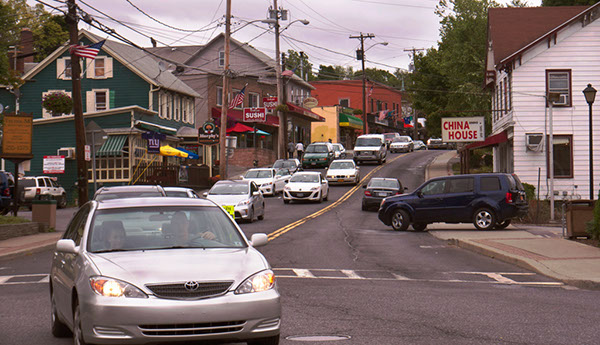

Recent New Paltz Town Board regulations, approved in late August, aim to reduce highway traffic congestion in and around the Village of New Paltz. These new rules will hopefully make transportation throughout town easier and safer for New Paltz residents and students alike.
“These [regulations] are guidelines that we’re basically asking the Planning Board to use when they approve a site plan,” Town Supervisor Susan Zimet said in an interview with The Daily Freeman.
The implementation of such regulations often require the joint support of the New Paltz Town and Village Boards. The New York State Department of Transportation (DOT) has major influence as well.
“Because the major roadways in New Paltz are state roads, the support of the DOT is equally significant,” said Gail Gallerie, chair of the New Paltz Transportation Implementation Committee. “The assistance DOT is providing to our community includes $7 million in state and federal funding for improvements.”
“Town Board’s recent adoption of the access management amendment to the Town’s zoning law will require the Town Planning Board to take into consideration issues with the design of entrances and exits in new developments or any sites undergoing significant renovations along major roadways in New Paltz,” Gallerie said.
Gallerie also said that similar access management already exists in town.
“The most dramatic example [of successful access management] can be found in the shopping malls in Kingston and Poughkeepsie where one can connect to several sites without having to return to major roads to do so,” said Gallerie.
The concept of easing traffic flow presents challenges, Gallerie said. She said the situation was complex, citing alternative methods of transportation as a major consideration.
“Easing traffic flow requires a multi-faceted approach, which requires focusing on land use but also creating alternatives to motor vehicle use, i.e. getting people out of their cars,” Gallerie said. “This requires creating safe conditions for pedestrians and bicyclists and also making mass transit an option.”
Gallerie said the LOOP Bus service at SUNY New Paltz as “the Transportation Implementation Committee’s most notable achievement in realizing these goals.”
The newest revisions align with plans to make the town’s commercial district more accessible for cyclists and pedestrians. These regulations will encourage forms of transportation besides individual vehicles.
“The Planning Board will also be expected to advocate for connections between sites, where possible, on these roadways and to require developers to include accommodations for [pedestrian or bicyclists’] safe use of entrances and exits and any connectors,” Gallerie said.
